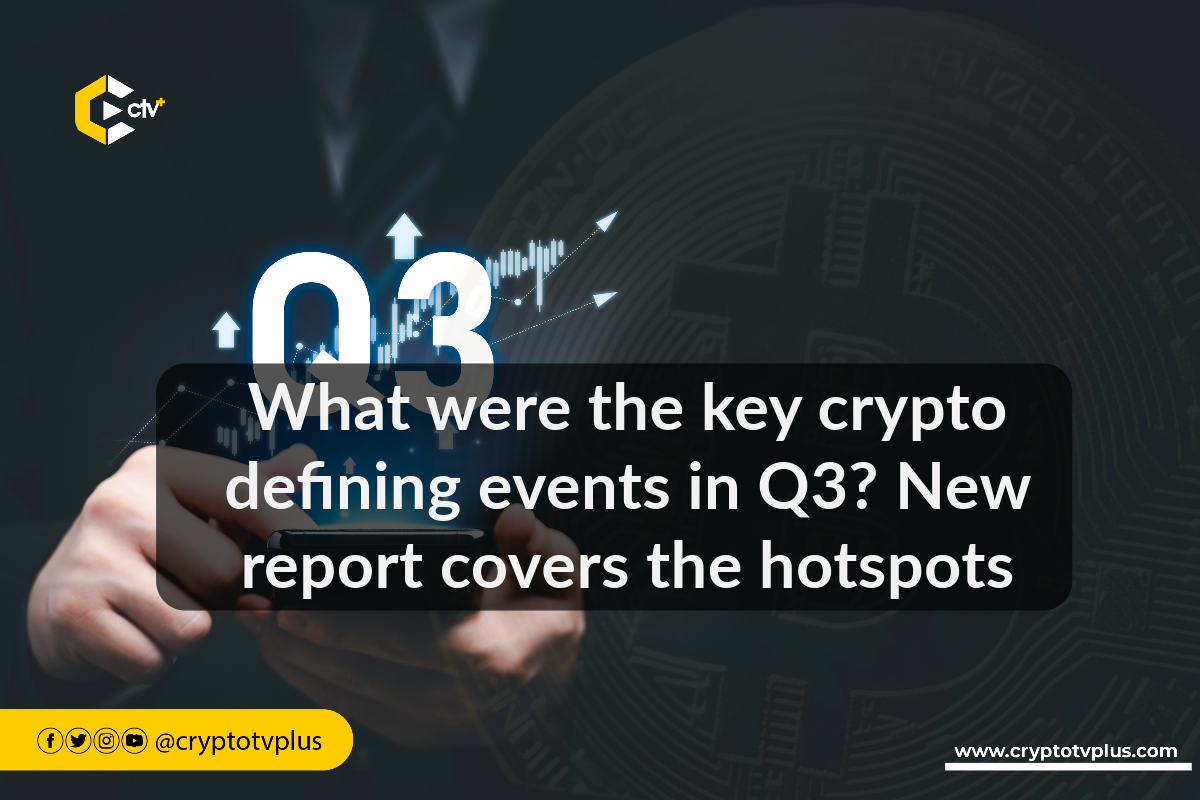News
What were the key crypto defining events in Q3? New report covers the hotspots

The emergence of Web3 has sparked a transformative shift in our perception of the Internet and how we engage and conduct transactions. It is clear that Web3 is more than just a trendy term; it has the potential to drive innovation across multiple industries.
The Web3 ecosystem is rapidly expanding, encompassing blockchain-powered decentralized finance (DeFi) platforms and the metaverse. In Q3, the Beosin EagleEye platform published a comprehensive report highlighting key hotspots within the Web3 ecosystem:
5 web3 Hotspots in Q3
The Ripple victory
On July 13, a U.S. District Court made a significant ruling regarding Ripple’s XRP. The court determined that XRP does not meet the criteria to be considered a security according to the Howey test. This decision takes into account the various uses of XRP, including investment, grants, transfers, and exchange trading. As a result, XRP experienced a remarkable surge in value, increasing by 90%, which had a substantial impact on the crypto market.
In another positive development for Ripple, Coinbase, a major cryptocurrency exchange, relisted XRP. This move is seen as a notable victory for Ripple in its ongoing battle against strict SEC regulation.
However, it’s important to acknowledge that the SEC has filed an appeal against this ruling, indicating that the legal conflict between the SEC and Ripple is far from being resolved.
Ethereum L2s popularity
In Q3, Ethereum’s Layer 2 networks experienced rapid development and gained popularity. Several projects successfully launched their mainnets, while even competing Layer 1 (L1) blockchains, such as Celo, started integrating with Ethereum’s L2s.
According to Footprint Analytics’ data, there are currently 31 L2 blockchains, with 18 of them having a Total Value Locked (TVL) exceeding $10 million. Leading the pack is Arbitrum with a TVL of $5 billion, followed by Optimism with $2.42 billion TVL, and ZkSync Era, which utilizes ZK Rollup technology, with $428 million TVL.
Ethereum is gradually transitioning from a user-to-chain model to a chain-to-chain model. In this evolving model, Ethereum serves as the foundational settlement layer, providing security and settlement guarantees to other chains. Sandeep Nailwa, co-founder of Polygon, highlighted this shift at TOKEN2049.
AI-focused Worldcoin launched WLD
On July 24, Worldcoin launched its $WLD token and secured listings on major exchanges. The project’s objective is to introduce fresh economic prospects and address the differentiation between human and artificial intelligence identities in an era defined by AI-driven advancements. Additionally, the project delves into the concept of AI-funded basic income.
To verify identities, Worldcoin implemented iris scanning technology through a device called Orb. However, this approach has attracted scrutiny and criticism, particularly regarding privacy, centralization, security, and accessibility concerns. Notably, Kenya suspended Worldcoin registration in August due to apprehensions related to security, privacy, and financial matters.
PayPal launched a stablecoin PYUSD
Following regulatory sanctions, Binance halted its BUSD services and shifted its focus to FDUSD, a stablecoin issued by a Hong Kong trust company. This crackdown on Binance and its stablecoin has given the lead to USDT and USDC, with PYUSD now entering the race.
In August, PayPal, a major U.S. financial firm, announced its own stablecoin called PYUSD. It is issued by Paxos and backed by U.S. dollar deposits, short-term U.S. Treasury bonds, and similar assets. Similar to Tether’s USD and Circle’s USD, PYUSD has gained popularity due to PayPal’s extensive user base and reputation in the payment sector, particularly within the United States.
Despite PYUSD’s on-chain utility, its future could be impacted by regulatory pressures on DeFi and the uncertain stablecoin regulations in the U.S.
FTX Liquidation
In September, a judge ruled that bankrupt cryptocurrency exchange, FTX could utilize its held cryptocurrencies valued at approximately $3.4 billion, including assets such as SOL, BTC, and ETH, to repay creditors. However, FTX is facing challenges in liquidating less liquid assets like SRM and MAPS. In addition to its crypto holdings, FTX has significant venture capital investments, collaborations with various funds, and provides loans to fintech companies, some of which demonstrate promising fundamentals for potential returns.
While FTX’s holdings in BTC and ETH are not expected to have a significant impact on the overall market, its substantial positions in SOL and APT are likely to result in long-term selling pressure. Market observers point out that FTX’s weekly liquidation limit stands at $100 million, and the impact of liquidation has already been partially accounted for in asset prices.
According to Claims Market, “the current expected payment ratio of creditors’ claims against FTX is 35%-40%, which is the highest value since FTX’s bankruptcy at the end of 2022, far exceeding the 12% at the beginning of the year.”
Another significant event was the rise of Telegram’s Unibot. In just over a month, from July 7th to August 10th, its trading bot surged from around $30 million to $2 billion. This dramatic market movement drew attention to Telegram bots and related tokens within the crypto market.













1 Comment